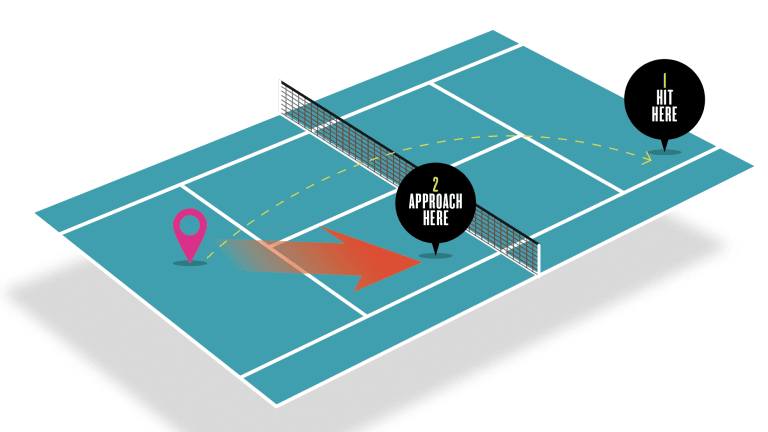Click here to read Part 1; click here to read Part 2.
The approach shot doesn’t end after the ball leaves your racquet. Tying a bow on an effective net rush means following the stroke with proper positioning. Even if you hit the ball with the planned execution, poor subsequent court coverage can spoil the final product.
Taking the appropriate space at net is a twin killing—it yields the best volley options and limits your opponent’s passing angles. Done correctly, it can be enough to elicit an error without even having to hit another ball. It may not draw the same satisfaction as punching a winning volley into the open court, but it counts just the same.
